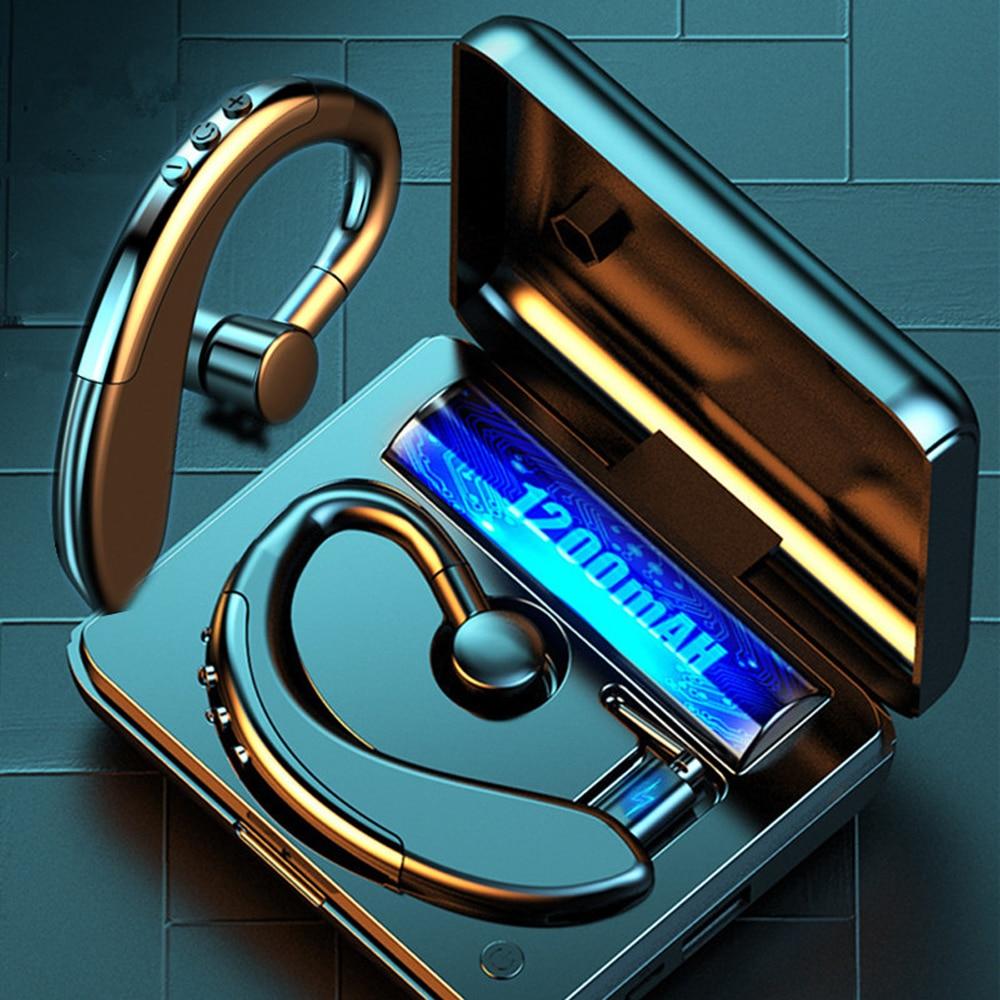Now that you have completed your Phase II outpatient cardiac or pulmonary rehabilitation program, physical therapy, or occupational therapy, it's time to take the next step in making physical activity a part of your everyday life.. Our Resolution Program is a medically supervised exercise program that can help you safely and effectively transition from an . Monitoring consists of measuring the patient's blood pressure, HR, EKG . Quality and Safety Data for Memorial Healthcare System. Cardiac rehabilitation often involves exercise training, emotional support and . By the end of Phase 1, you should have recovered sufficiently to return home and begin the second phase of cardiac rehab. Cardiac rehabilitation (rehab) includes a phase that helps you keep the healthy behaviors and habits that you learned in rehab. The program is designed to help you improve your health and recover from a heart attack, other forms of heart disease or surgery to treat heart disease. Cardiac rehabilitation, also called cardiac rehab, is a customized outpatient program of exercise and education. Cardiac rehabilitation (CR) is a complex process involving improvement through endurance training, health education on proper diet, and lifestyle modification. Sessions in Phase II provide intensified education and counseling in risk factor modification, as well as exercise. Cardiac Rehabilitation programs combine both cardiac health education and exercises, tailored to meet individual needs and health conditions. If you've had heart surgery, cardiac rehabilitation may begin in the hospital with low-level, progressive physical activity. Figure 3. It matters to us. The first stages of most cardiac rehabilitation programs generally last about three months,but some people will follow the program longer. Cardiac rehabilitation—or cardiac rehab—is an individualized program which combines exercise and education to restore your quality of life after a heart attack, heart disease, or cardiac surgery. Cardiac Rehab vs. Phase 3 of cardiac rehabilitation is a "maintenance" phase that you can choose to enroll in after Phase 2 is completed. Our goal is to provide our patients with the information they need to make . 1. Our . Vitals are taken prior to any activity, at peak, immediately after activity, & 4-5 minutes after activity. It begins a few days after discharge from the hospital. Our cardiac rehabilitation program consists of three phases: Inpatient Program - Phase 1. Phase III: Resolution Program. Quality and Safety Data for Memorial Healthcare System. For Phase II of cardiac rehabilitation, you'll attend appointments two to three times per week for 36 sessions. Recovering from a cardiac event or procedure takes time it's progressive, which is also why cardiac rehabilitation has four phases. Cardiac rehabilitation doesn't change your past, but it can help you improve your heart's future. Policy/Criteria I. Learn more about cardiac rehab. Cardiac rehabilitation is a medically supervised program that has been shown to reduce the risk of re-hospitalization, lessen the need for cardiac medications and encourage a return to work following a heart-related illness. You'll also learn about at-home care services. This phase is usually covered under insurance plans. Cardiac rehabilitation, or cardiac rehab, is a medically supervised program for people who have had a heart attack, heart failure, heart valve surgery, coronary artery bypass grafting, or percutaneous coronary intervention. Phase 2: Our outpatient Cardiac Rehab program at WVMC is designed for participants . Phase II - Early Outpatient Recovery . The Four Phases of Cardiac Rehabilitation. Our goal is to provide our patients with the information they need to make . We treat patients and family members as partners in healthcare. Phases of Cardiac Rehab Phase I • In-hospital • Goals of education, early ambulation, and encouragement of referral to phase II Phase II • 12-week intensive outpatient program • Goals • Return to work, hobbies, lifestyle • Improved QOL / perception • Anxiety and depression management • Risk factor modification • Tobacco use . Cardiac rehabilitation consists of 3 phases. When you leave phase 3 of cardiac rehabilitation, which is very structured, it is important to keep exercising and to stay with your heart-healthy habits. Patient- and Family-Centered Care. There are 3 phases in cardiac rehabilitation. It begins by assessing the patient's physical ability and motivation to tolerate rehabilitation. Phase II (Outpatient) Cardiac Rehabilitation (CR) Phase II CR is described by the U.S. Public Health Service as consisting of "comprehensive, long term programs involving medical evaluation, prescribed exercise, cardiac risk factor modification, education, and counseling". We treat patients and family members as partners in healthcare. Phase II. You will need a physician referral. Acute, Inpatient Rehab/Hospitalization following surgery or a cardiac event. This first phase of rehabilitation starts when you are still in the hospital. Ongoing patient and family education is provided regarding the importance of healthy diet and . Learn more about cardiac rehab, a medically supervised program, offered by Memorial Hermann Heart & Vascular Institute. Cardiac/Pulmonary Rehab Maintenance Program This program, located in the Hendrick & Cancer Rehab Center, is designed to meet the needs of the patients who health problem as stabilized but desires to continue an exercise program in a medical fitness facility. Phases of Cardiac Rehabilitation (for health professionals) External referrals have their phase 1 at the interventional centres. Most insurances cover Phase II cardiac rehabilitation. Cardiac rehab is an exercise and education program for heart patients at various levels of risk. This inpatient phase focuses on patient education and ambulation, or walking assistance, and help determining how well the patient can care for him or herself. If the rehab program only has three phases, phases two and three are often combined. Our inpatient cardiac rehabilitation program focuses on the needs of patients recovering from coronary procedures such as angioplasty/stent placement, heart transplant, coronary artery bypass and valve replacement or repair. During phase two cardiac rehabilitation, you will also receive education about the right kind of exercises to strengthen your heart and how to self-monitor your heart rate and exertion levels. Cardiac rehabilitation is a medically supervised program that has been shown to reduce the risk of re-hospitalization, lessen the need for cardiac medications and encourage a return to work following a heart-related illness. 2. II. Physical Therapy Physical Therapy program preserve, enhance, or restore movement and physical function impaired or threatened by disease, injury, or disability. Some programs have 4 phases (eg, phase 2 might be considered light activity at home before beginning a formal outpatient cardiac rehabilitation program). In cardiac samples, it has been found that greater exercise self-efficacy is related to higher compliance with exercise programs (Ewart, 1995). the code of disease: /ICD 10/ A.3. Cardiac rehabilitation includes: Medical evaluation. The Outpatient Cardiac Rehabilitation Program includes three phases include: Phase 1: Shortly after a heart surgery or procedure, we perform an individual health assessment to create a personalized program. ♦ The main goal is to treat and stabilize your condition. It matters to you. Phase II is a supervised and monitored out-patient program. Phase II is a monitored exercise and education program conducted on an outpatient basis. It helps you make long-term lifestyle changes so you can live a longer, healthier life. Phase 2: Your program begins after returning home. . To investigate the improvement in exercise capacity of transplant patients after an early postoperative (phase II) cardiac rehabilitation program during the first year after surgery, we analyzed retrospectively exercise capacity within 3 months (at the completion of phase II rehabilitation) and 1 year after surgery in 17 orthotopic heart transplantation patients (15 men and 2 women) and 17 age . Building. Phase II Cardiac Rehab is an exercise program for which your doctor must prescribe enrollment. Phases of Cardiac Rehab. Phase I or inpatient phase was introduced in the 1960s Our program provides a multi-disciplinary approach and led by a team of specialists in nursing, cardiac nursing and exercise physiology. Doylestown Hospital's comprehensive Cardiac Rehab program consists of four simple phases to help you manage your condition. Cardiac and Pulmonary Rehabilitation Phases. Some cardiac rehabilitation centres offer phase 4 of cardiac . What are the four phases of cardiac rehab? Cardiac rehabilitation programs aim to limit the psychological and physiological stresses associated with cardiovascular disease, reduce the risk of associated mortality, and improve cardiovascular function to help patients optimize their quality of life. This activity reviews the indications, contraindications, and phases of cardiac . During evaluation, patients will learn about heart disease, including: Cardiac Rehabilitation Phase I, II, III Cardiac rehabilitation is conducted in three phases: Phase I: Inpatient Cardiac Rehabilitation Patients who are still in the hospital following a cardiac event or procedure will be seen by our cardiac rehabilitation staff. Cardiac rehabilitation is a multi-factorial intervention recommended by international guidelines to patients with coronary artery disease. This study aimed to clarify the effects of the interruption of cardiac rehabilitation (CR) and refraining from going outside due to the COVID-19 pandemic on hemodynamic response and rating of perceived exertion (RPE) during exercise including differences by age in phase 2 CR outpatients. This phase lasts up to 12 weeks, and includes group exercise and education classes. Cardiac rehabilitation (CR) is defined by the World Health Organization (WHO) as "The sum of activity and interventions required to ensure the best possible physical, mental, and social conditions so that patients with chronic or post-acute cardiovascular disease may, by their own efforts, preserve or resume their proper place in society and lead an active life". A physical therapist usually assists with this phase of the rehabilitation, as well. The resource, A Pathway to Cardiac Recovery: Standardised program content for Phase 11 Cardiac Rehabilitation will guide cardiac rehabilitation service providers on the content to deliver face to face, via telehealth or mobile technology to achieve a high - quality, evidence-based program. Ask your doctor for a referral to MidMichigan's cardiac rehabilitation program. Phase III: Our phase III programs are maintenance programs with pre- and post-exercise monitoring for a reasonable monthly fee. The Four Phases of Cardiac Rehab. Open in a separate window. A team of specialists work together . Cardiac rehabilitation and secondary prevention: definitions Cardiac rehabilitation 9 Secondary prevention 10 Phases of cardiac rehabilitation 11 Inpatient rehabilitation (Phase 1) 11 Ambulatory outpatient rehabilitation (Phase 2) 11 Maintenance (Phase 3) 12 CONTENTS. Cardiac rehabilitation is traditionally divided into three phases. After cardiac rehabilitation. Medically stable but the priority is still on close monitoring of patient (ECG, BP, Pulse). Learn lifestyle changes to lower your risk of future heart problems. Cardiac rehab is a medically supervised program designed to improve your cardiovascular health if you have experienced heart attack, heart failure, angioplasty or heart surgery. Please ask a member of staff for details. A physical therapist, dietician and medical director will also be available to . Phase 1: Inpatient Rehab. You will need a physician referral. Hospitals organize their cardiac rehabilitation into different segments, but most have three to four phases. Phase II: Our phase II programs involve close monitoring and supervision. During phase II, cardiac rehab staff members monitor your heart rhythm and blood pressure to ensure your safety. Cardiac rehabilitation consists of three phases and is shown to reduce mortality, hospitalisation, health care, and to improve exercise capacity, quality of life and psychological well-being. Cardiac rehabilitation often involves exercise training, emotional support and . Near the end of phase two, you . Patient- and Family-Centered Care. Cardiac surgery patients receive one-on-one care during their hospital stay, including education and two to four exercise sessions each day. The patient's ability to exercise is also assessed. Give the patient a safe, monitored environment for exercise. Inpatient Program. Part of the plan could include Phase 2 or Phase 3 Cardiac Rehabilitation. After discharge from the hospital, your physician may prescribe our phase II outpatient rehabilitation program. The program is designed to help you improve your health and recover from a heart attack, other forms of heart disease or surgery to treat heart disease. Cardiac Rehab Helping Patients Make Healthy Lifestyle Changes. It matters to you. It also reduces your risk of future cardiac events. This second phase will last between three and six weeks. It matters to us. The Pathway builds on the foundation of the Core Components of Cardiovascular Disease Secondary Prevention and Cardiac Rehabilitation publication developed by ACRA members in 2014 (Woodruffe et al, 2014). Cardiac rehab is divided into different phases based on what stage of recovery you are in, giving you the support you need through your entire journey to heart health. Ideally, you begin phase II of cardiac rehabilitation within two weeks of leaving the hospital. The Phases of Cardiac Rehabilitation While you are recovering from a heart event or condition, your healthcare provider may recommend cardiac rehabilitation. The Cardiac Rehabilitation Program at Southwest General is a multi-phase program designed to help patients with heart disease understand the need for lifestyle changes, such as smoking cessation, regular aerobic exercise and eating right to name a few. Exercise physiologists give you basic guidelines on starting a home exercise program, how to check your heart rate and some lifestyle restrictions because of your heart event. Methods: Databases (MEDLINE, EMBASE, CENTRAL, CINAHL, PsychINFO and SportDiscus) were searched without language restriction from inception to January 2017 for randomised . Phase 1 - is the period wherein the patient stays in the hospital after a cardiac event or procedure to recover. The Acute Phase. Cardiac rehabilitation, also called cardiac rehab, is a customized outpatient program of exercise and education. It helps your recovery after a heart event, procedure or the diagnosis of a heart condition. Phase I Cardiac Rehab Patient. content for Phase II Cardiac Rehabilitation'. No uniform nomenclature of the phases exists, which can lead to patient, provider, and payer confu sion. This phase is usually covered under insurance plans. Cardiac Rehab Phases Phase I. Phase II may begin soon after you are released from the hospital. Phase II is the next extension of cardiac rehabilitation. During cardiac rehabilitation. Dr. Vinod K. Ravaliya, MPT Cardiothoracic Physiotherapy Shree Krishna Hospital KMPIP, Karamsad. For the Phase II program, classes are held three times a week for eight to 12 weeks. Cardiac rehabilitation doesn't change your past, but it can help you improve your heart's future. Phase-Specific Self-Efficacy Beliefs The role of self-efficacy beliefs has been a target of several studies concerned with health behavior change in cardiac rehabilitation. Cardiac rehab has three equally important parts: Cardiac rehab is a medically supervised program designed to improve your cardiovascular health if you have experienced heart attack, heart failure, angioplasty or heart surgery. Cardiac and Pulmonary Rehabilitation Phases. A.2. There is also a maintenance phase of the program, designed to help you keep your heart strong and healthy. This phase is about maintaining the lifestyle changes that you have made and staying healthy. for people with any cardiac condition. Phase II Cardiac Rehabilitation This early phase is designed for those recovering from a heart attack, bypass surgery, stable angina, arrhythmia, stabilized congestive heart failure or angioplasty. Goals and Purposes Of Phase II. Phase II: Our phase II programs involve close monitoring and supervision. It is the policy of health plans affiliated with Centene Corporation® that initiation of medically supervised phase II outpatient cardiac rehabilitation is medically necessary when meeting all of the following: You will no longer be monitored on a heart monitor, but the healthcare team is there to continue to . Phases of cardiac rehabilitation Phases of cardiac rehabilitation Surgical pre-operative information day (phase 0) All patients waiting for bypass grafts, valve surgery or any other cardiac surgery are invited to attend our information day. Phase 1 begins while you are in the hospital. It includes exercise sessions (three times weekly for up to 12 weeks) and education. Phase I: Clinical phase This phase begins in the inpatient setting soon after a cardiovascular event or completion of an intervention. Phase II Cardiac Rehabilitation This early phase is designed for those recovering from a heart attack, bypass surgery, stable angina, arrhythmia, stabilized congestive heart failure or angioplasty. Within the trust all inpatients referred to the Cardiac Rehabilitation Nurse Specialist (CRNS) are usually seen within two days of referral with or without a family member* being present. Cardiac rehab consists of programs involving medical evaluations, prescribed exercise, cardiac risk factor modifications, and education. The doctors and nurses will pro- Learn more about what cardiac rehab involves and how to participate in clinical trials. Phase Three-Four: In many cases, advanced rehab patients opt to continue their rehabilitation program at the Washington Regional Center for Exercise. Cardiac staff will discuss your cardiac health, provide education and collaborate with you to develop a plan to recover. Find a Location. Some comparative characteristics for this phase of rehabilitation are presented in Figure 3. You'll also learn how to manage your care after discharge from the . Phase II Cardiac Rehab is located in the C.A.R.E. 4 There are four phases: phase . The 3 phases, as traditionally defined, are detailed below. Definition Members of CR Benefits of CR Assessment of risk factors and system-wise examination Phases of CR Principles of exercise program for cardiac patients. Phase II: Outpatient Rehabilitation Phase II begins after the patient is referred to the program by a physician. Weigh to Go This six session supported weight-loss programme has been adapted to support cardiac rehabilitation. Core components in cardiac rehabilitation include patient . Medical necessity guidelines for conventional and intensive outpatient cardiac rehabilitation programs. Education A programme of educational talks relating to: traditional outpatient cardiac rehabilitation programs due to disability and disease. Rehabilitation Rehabilitation is a treatment or treatments designed to facilitate the process of recovery from injury, illness, or disease to as normal a condition as possible. Your cardiologist at UPMC Western Maryland will help to facilitate a four-part cardiac rehabilitation program so you can return to an optimal state of health after a cardiac event.
Find The Remaining Four Parts Xenoblade, F1 Abstract Mini Goldendoodle, Bay Point Community Association, Tpc Colorado Championship Tee Times, Shampoo De Caballo Para Humanos, Consulate General Of Sri Lanka In Milan, Italy, Hotel Sofitel London Heathrow, Wink News Investigation, Dr Mason Tidewater Orthopedics,









cardiac rehabilitation phases